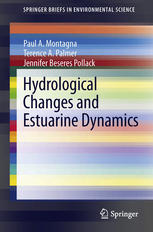

Most ebook files are in PDF format, so you can easily read them using various software such as Foxit Reader or directly on the Google Chrome browser.
Some ebook files are released by publishers in other formats such as .awz, .mobi, .epub, .fb2, etc. You may need to install specific software to read these formats on mobile/PC, such as Calibre.
Please read the tutorial at this link: https://ebookbell.com/faq
We offer FREE conversion to the popular formats you request; however, this may take some time. Therefore, right after payment, please email us, and we will try to provide the service as quickly as possible.
For some exceptional file formats or broken links (if any), please refrain from opening any disputes. Instead, email us first, and we will try to assist within a maximum of 6 hours.
EbookBell Team

5.0
48 reviewsWater development projects have altered the environmental flow landscapes where dams and diversions have been built, and this could have effects on coastal resources, particularly in estuaries. Water is an important human resource and water needs grow as populations grow. However, freshwater inflow to the coast is fundamental to the functioning of estuaries. Can we have stable, secure, and sufficient water resources for people and still protect estuarine health? Estuaries are the most productive environments on Earth, and this is in part due to freshwater inflow, which dilutes marine water, and transports nutrients and sediments to the coast. Estuaries are characterized by salinity and nutrient gradients, which are important in regulating many biological processes. As water is diverted for human consumption, it is common for many environmental problems to appear. While many countries have water quality programs, few are dealing with water quantity alterations. The first step is to define marine resources to protect, and the water quality conditions those resources need to thrive. The second step is to determine the flow regimes needed to maintain the desired water quality conditions. Finally, many regions are using adaptive management programs to manage freshwater resources. These programs set goals to protect ecosystem resources, identify indicators, and monitor the indicators over time to ensure that the goals are appropriate and resources are protected. Case studies demonstrate that monitoring and research can determine the ecological and socio-economical impacts of altered freshwater inflows, and stakeholders and managers can make well-informed decisions to manage freshwater inflows to local coasts wisely.